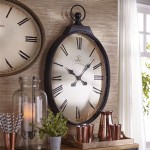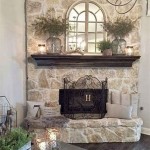How to Decorate a Tree with Ribbon Pieces
Decorating a tree with ribbon pieces is a versatile and visually appealing method that adds texture, color, and depth. This technique is adaptable to various styles, from traditional to contemporary, and can be customized to complement any existing ornament collection. Unlike draping long strands of ribbon, using ribbon pieces allows for greater control over placement and visual effect, enabling the creation of intricate and personalized designs. This approach is suitable for artificial trees, real trees, and trees of all sizes.
Successful ribbon decoration depends on careful planning and execution. The process involves selecting appropriate ribbon types, determining the desired style, and employing effective attachment methods. Consideration should be given to the tree’s shape, size, and the existing ornaments to ensure a cohesive and balanced aesthetic. The following sections provide a detailed guide to integrating ribbon pieces into tree ornamentation.
Choosing the Right Ribbon
The selection of ribbon is crucial to achieving the desired look. Various materials, widths, colors, and patterns are available, each contributing a unique element to the overall design. Understanding the characteristics of different ribbon types enables informed decision-making and facilitates the creation of a visually harmonious tree.
Material:
Ribbon materials range from natural fibers like burlap and cotton to synthetic options like satin, velvet, and organza. Burlap and cotton offer a rustic, textured appearance, ideal for farmhouse or country-themed decorations. Satin provides a smooth, lustrous finish, lending elegance and sophistication. Velvet adds richness and depth, suitable for traditional or luxurious styles. Organza is a sheer, lightweight material that creates a delicate, ethereal effect. The choice of material should align with the overall theme and desired aesthetic.Width:
Ribbon width affects the visual impact and ease of handling. Narrow ribbons, typically ranging from 1/4 inch to 1 inch, are suitable for delicate accents, intricate details, and filling small gaps. Medium-width ribbons, between 1.5 inches and 2.5 inches, offer a balance of visibility and manageability, suitable for creating flowing shapes and adding substantial texture. Wide ribbons, exceeding 3 inches, make a bold statement and are ideal for creating dramatic focal points. Combining different widths adds visual interest and creates a layered effect.Color and Pattern:
The color palette and pattern of the ribbon should complement the existing ornaments and the overall decor. Solid colors provide a clean and modern look, while patterned ribbons add visual complexity and personality. Consider using a combination of complementary colors, such as red and green for a traditional Christmas theme, or a monochromatic palette for a more contemporary aesthetic. Patterns range from simple stripes and polka dots to intricate floral designs and geometric shapes. When selecting patterns, ensure they harmonize with the other decorative elements on the tree.Quantity:
Estimating the required ribbon quantity depends on the tree’s size and the desired density of the ribbon decorations. A general guideline is to allocate approximately 10 to 15 yards of ribbon for a small tree (3-4 feet), 20 to 30 yards for a medium tree (5-6 feet), and 30 to 50 yards or more for a large tree (7 feet and above). It's always prudent to purchase slightly more ribbon than estimated to account for adjustments and potential errors during the decorating process.Cutting and Attaching Ribbon Pieces
The method of cutting and attaching ribbon pieces directly impacts the final appearance of the decorated tree. Consistent cutting techniques and secure attachment methods are essential for achieving a professional and polished result. The size and shape of the ribbon pieces, as well as the means of securing them to the branches, contribute to the overall visual effect.
Cutting Techniques:
Employ sharp scissors or a rotary cutter to ensure clean, even cuts. Frayed edges can detract from the overall appearance. Mitering the ends of the ribbon pieces, either by folding the ribbon in half and cutting at an angle or using a specialized miter tool, creates a professional finish and prevents fraying. The length of the ribbon pieces should be determined by the desired visual effect. Shorter pieces, typically ranging from 4 to 8 inches, are suitable for creating subtle accents and filling small gaps. Longer pieces, ranging from 10 to 18 inches, create a more dramatic effect and add substantial texture. Maintaining consistent lengths or using a variety of lengths strategically enhances the overall design.Attachment Methods:
Various methods can secure ribbon pieces to the tree branches. These methods often depend on the ribbon material. Twist ties, floral wire, and ribbon wire are common options. Twist ties are inexpensive and easy to use, but may be less discreet. Floral wire provides a more secure hold and can be easily concealed within the tree branches. Ribbon wire, integrated directly into the ribbon's edge, allows for shaping the ribbon and creating dimensional effects. In addition to these methods, consider using hot glue sparingly. To attach, wrap the tie or wire around the branch and the ribbon, securing it tightly but avoiding damage to the tree. Position the ribbon pieces at varying angles and depths to create a layered and dynamic effect.Placement Strategies:
Strategic placement of ribbon pieces is essential for achieving a balanced and visually appealing tree. Begin by placing larger ribbon pieces near the base of the tree to create a foundation for the design. As one moves upwards, use progressively smaller pieces to maintain visual balance. Distribute the ribbon pieces evenly throughout the tree, avoiding clustering in specific areas. Consider the tree’s shape and structure when placing the ribbon. For example, on a sparse tree, focus on filling gaps and adding volume. On a fuller tree, emphasize creating texture and depth. Step back periodically to assess the overall appearance and make adjustments as needed. A mirror might be useful to view the back of the tree if it is against a wall.Creating Different Ribbon Styles
Employing ribbon pieces opens up a multitude of design possibilities. Different techniques and arrangements can achieve various styles, from traditional elegance to modern simplicity. The following describes popular ribbon styles and provides practical guidance for recreating them.
Classic Swags:
This traditional style involves creating gentle, cascading swags of ribbon that drape elegantly down the tree. To create this look, cut ribbon pieces to a uniform length, typically between 12 and 18 inches. Attach the ribbon pieces to the branches at regular intervals, creating a flowing, undulating pattern. Overlap the ribbon pieces slightly to create a seamless transition. Use a variety of ribbon widths and colors to add depth and visual interest. This style is well-suited for trees decorated with traditional ornaments, such as glass balls and figurines.Ribbon Spirals:
This dynamic style involves creating a spiral effect around the tree by arranging ribbon pieces in a diagonal pattern. Begin at the top of the tree and work downwards, attaching ribbon pieces at a consistent angle. Vary the length of the ribbon pieces to create a sense of movement and dimension. Use wired ribbon to create more defined spirals that hold their shape. This style is suitable for both traditional and modern trees, and can be customized with different ribbon colors and patterns.Ribbon Burst:
A ribbon burst provides a modern, eye-catching look. This involves creating bursts of ribbon that emanate from the center of the tree branches. Cut ribbon pieces into varying lengths, ranging from 6 to 12 inches. Gather the ribbon pieces together at one end and secure them with floral wire. Attach the gathered end to a tree branch, allowing the ribbon pieces to fan out in a burst-like pattern. Distribute the ribbon bursts evenly throughout the tree, creating a sense of energy and visual excitement. Use bold, contrasting colors to enhance the impact of the ribbon bursts.Ribbon Garland Effect:
This approach mimics the look of a traditional ribbon garland while offering greater control over placement and visual impact. Cut ribbon pieces to a uniform length, typically between 8 and 12 inches. Fold each ribbon piece in half and attach it to a branch at the fold, creating a loop. Overlap the loops slightly to create a continuous, garland-like effect. Use a variety of ribbon textures and colors to add depth and dimension. This style is well suited for trees with a minimalist or modern aesthetic.Ribbon Accents Between Ornaments:
Decorating with small ribbon pieces in the spaces between ornaments can add texture, color and depth. To do this, cut the ribbon in lengths of 4-6 inches and fold in the same method used in the ribbon garland effort. These can be secured with flexible wire or wrapped around the thinnest branches. This design method focuses on highlighting what already exists on the tree.Ultimately, decorating a tree with ribbon pieces is a creative endeavor that allows for personalization and artistic expression. By carefully selecting the appropriate ribbon types, employing effective attachment methods, and experimenting with different styles, one can transform a tree into a stunning visual centerpiece.

How To Decorate A Tree With Ribbons 4 Creative Ways Piece Of Rainbow

How To Decorate A Tree With Ribbons 4 Creative Ways Piece Of Rainbow

How To Put Ribbon On A Tree The Easy Way

How To Decorate A Tree With Ribbon Diy Fynes Designs

How To Decorate A Tree With Ribbons 4 Creative Ways Piece Of Rainbow

How To Decorate A Tree With Ribbon Kippi At Home

How To Put Ribbon On A Tree Easiest Pro

A Simple Way To Put Ribbon On Tree Sanctuary Home Decor

How To Add Vertical Ribbon A Tree The Creek Line House

The Best Tree Ribbon Tutorial Ella Claire Co
Related Posts







